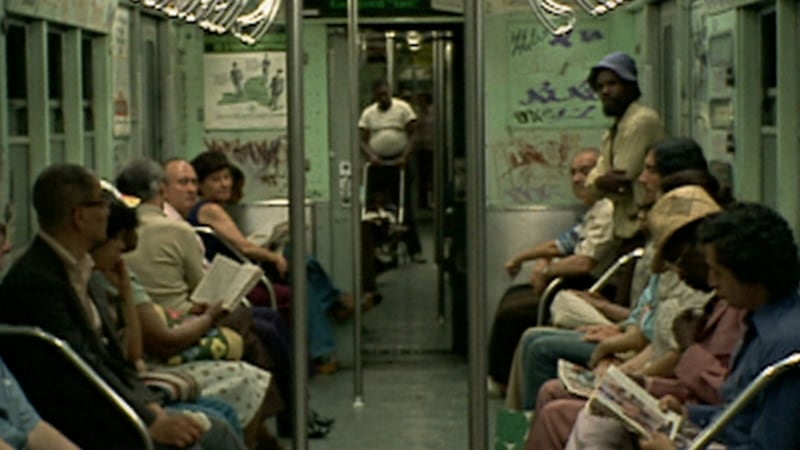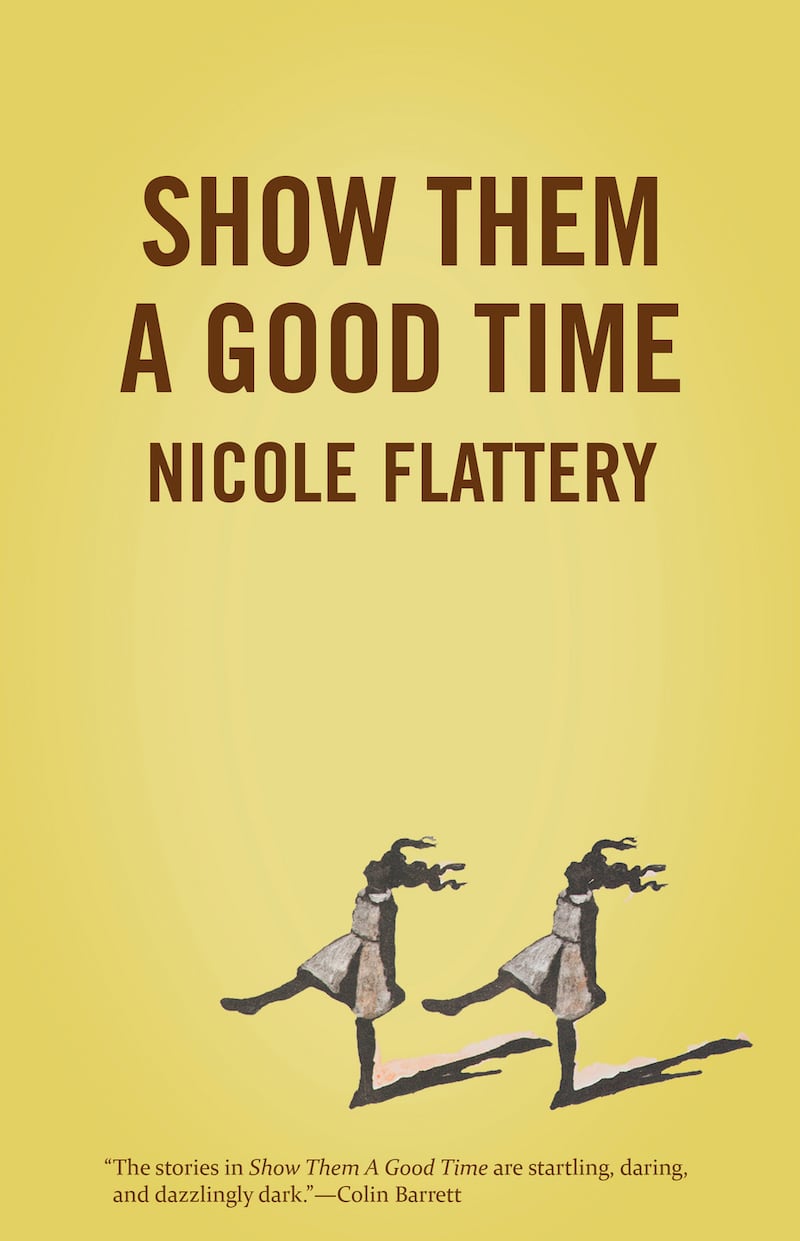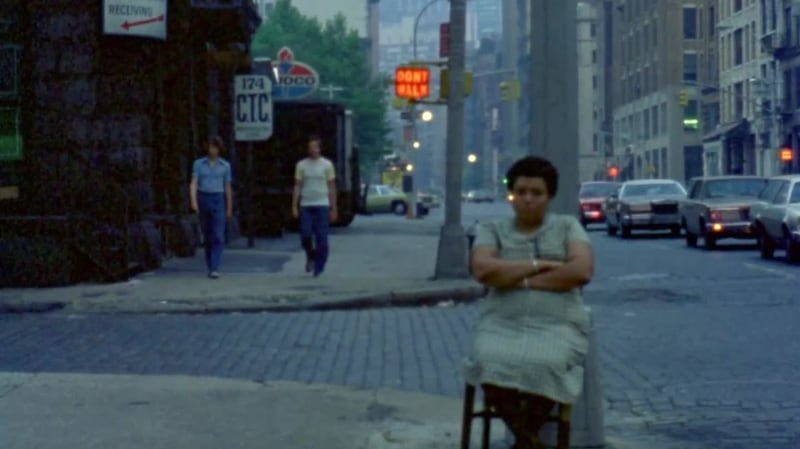A few weeks ago, in early February, I travelled across New York to watch a film. I took two subways and walked a significant distance. This is not unusual for me. I was a film student and, if I was not a great student, I retained a certain curiosity.
I’m familiar with this routine – collecting my things and travelling a certain distance to sit in a dark room and watch, in the alleged service of higher education, films by Godard, Cassavetes, Hitchcock. This is not an essay about gender, and those directors’ films are edifying and admirable, but when it comes to auteurs, women are not especially overrepresented.
On this particular occasion, I was late. This is also not unusual for me. I had to enter the cinema after the film had started, an experience not unlike beginning to write: you stumble around in the dark for a while, feeling desperately, incontrovertibly behind, apologising to everyone for the inconvenience, until you hopefully find a seat, a place where you're less confused. On the screen in front of me, seventies New York unspooled. The film was Chantal Akerman's 1977 drama News from Home.
The description of it as a “drama” is imperfect; in fact, nothing happens at all, there is no narrative, no journey or catharsis. Instead, Akerman reads out her mother’s letters to her from home in a dispassionate, occasionally rushed, voiceover, as long shots of pre-Giuliani New York fill the screen.

There is a sense of menace, these are mean streets, but it’s a moving experience. It’s strange, when you’re constantly assaulted by disaster, when it seems natural to surrender to hopelessness, what touches you. It’s the letters themselves – the information her mother delivers, bits of small-town gossip, in comparison to the obvious vastness of Akerman’s life in the city. Her tone is restrained but occasionally it slips, betrays her sense of loss and her worry over her daughter’s safety. One letter simply ends with, “Stay well, sweetheart”.
It was only after I left, when I thought about the film – because it's a film that forces you to think-that I realised how disruptive it actually was. It was 1977, Taxi Driver-era New York, and Akerman was a lone woman with a movie camera, making a mother-daughter picture.
She moves easily through the streets, although many of the threatening night-time shots don’t feature a single woman. She’s a camera. She’s a recording machine. The city is loud but you understand that loudness was what Akerman was chasing. It’s lonely, but that’s probably also what she was seeking.
She demonstrates great patience. Her shots linger, exteriors of densely-packed apartment buildings, busy streets, rattling subways. She is filming a masculine, crime-ridden city with a feminine eye and overlaying it with intimate and private correspondence. The film critic AS Hamrah in his essay on a meeting with Akerman, before her death, described her as "calmly defiant". News from Home, although simply-made and hardly provocative, is a calmly defiant picture.

I write about Akerman and News from Home as a way of writing about my own work. I didn't need to see a film to explain my own book to me, but it certainly helped. I find it hard to write about myself, like I imagine it's hard to watch yourself on screen, but Akerman and I share some of the same obsessions.
Firstly, we both have an interest in dead, unproductive time. It was only when I read my own book from front to back, a particularly painful task, did I notice this. My characters inhabit coffee-shops, they take long, pointless walks, they conduct themselves without aim or ambition.
In my story, Show Them a Good Time the characters spend their days working in a garage, a job that is not a job, suspended in a purgatorial space. You understand from the opening moments of News from Home that Akerman had no interest in making a traditional film but she was deeply interested in time and how it moves.
She was also intrigued by cities and burrowing underneath their topography. I share this also – in the collection stories are set in New York, Dublin and Paris. I think about cities, their frantic pace and how difficult it can be, in the buzz, to reconcile the life you're supposed to be living to the one you're actually living. A paragraph in Show Them A Good Time reads: "I liked to talk about the city women on the trains, the women who never removed their sunglasses. They were incredible, these ladies! They sat deathly still, their eyes shielded from the dark, metal sun and tears moving down their cheeks, as if by chance, as if it had nothing to do with them."

I remember seeing an advertisement on the subway before urging me to be a “doer”. I’m afraid that will never be the case, but Akerman knew there was something worthwhile in taking your time, looking at life carefully, slowing down.
Of course, there are also the letters. You never once see Akerman’s mother in the film but she dominates every frame. Like all mothers, she casts a long shadow. I write about mothers often, concerned mothers who communicate with their daughters as they attempt to make lives for themselves in other cities. I write about young women in self-imposed exile, searching for meaning that they might never find.
Obviously Akerman’s mother’s letters are revealing, not just for their contents but for what is hidden, what they unwittingly disclose about their relationship. There is an added layer of poignancy and it comes from this: Akerman’s mother doesn’t know who her daughter will become. She has no idea that, forty years from now, her daughter’s films will still sell out theatres, that people will travel across vastly changed subways and navigate the same streets she once filmed, to watch them. She sends the little extra cash she has saved to a child who’s life is completely different from her own. She is tired and ill but she has faith. It’s that unswerving, unmentioned belief in her daughter that makes the film miraculous, almost a religious object. I know what you’re going to be. You don’t need to convince me.
If I’ve learned anything while writing this book, it’s that a lot of a writing life, or an arts career in general, depends on your ability to convince people. You have to convince your editors and readers. You have to convince in your funding applications, striking that perfect tone. You have to convince friends and acquaintances, exuding a mix of confidence and humility, which is its own sort of prose, its own sort of lengthy joke. Mostly, you have to convince yourself and try to act deserving.

Like Akerman, I've been lucky enough to know several people I didn't need to convince at all and that was liberating. Akerman was twenty-five when she made her first film. I knew in this book that I wanted to write about young women who work at making something, who are invested in creation. The result didn't have to be a masterpiece, it didn't even necessarily have to be good, it just needed to exist. In Abortion, A Love Story two young girls, for better or for worse, put on a play in a student theatre. It's messy and amateurish, but it's their own.
Akerman killed herself when she was 65, the age my mother is now; still young; still capable of good work. I somehow knew about her death before I read it. I knew it from the final shot of News from Home, which makes New York a ghost town, an indistinct grey mass. It's clearly directed by someone who has one foot out of this life already.
Akerman often worked in her pyjamas, her depression so bad she nearly couldn’t get out of bed. This is reported in the way mental illness is often reported in women: to discredit her, prove that she was somehow difficult, dysfunctional and aberrant. This is not the breathless reporting male genius receives. It’s a grim, one-dimensional view and it sucks the love and joy from her work.
I write about this too – in a story called Track a woman, after a period of mental instability, finds herself in a relationship with a well-known comedian. It seems important to write about it, to change the airless, uninteresting narrative. Someone else's life is not yours to decide. Akerman worked in her pyjamas. My response to that would be: so what? She still showed up, didn't she? She was there, sloppily dressed or not. Besides, I would rather watch a film that she made in her pyjamas than almost anything else.
In the same essay by AS Hamrah, Akerman discusses her technique, how when she worked in video “she had to try to make the image look worse than it would otherwise because if the video looked too clear and boring, like everything it captured was understandable and normal, there wasn’t enough interference”.
I like this idea of interference, which is essentially what writers do. I wrote this book, my first, between home and away, and have my own digital archive of communication, texts and emails sent and received. Then I have my own private archive, e-mails abandoned, messages deleted, their sentiment deemed wrong or too heartfelt. I wrote this collection, from the publication of my first story, on and off, over a period of four years.
I wrote it against a ground bass of social change for women, during the abortion referendum and the Belfast rape trial, a case I followed with intense interest. I thought if I read everything about it I would learn something. All I learnt was how much news I could consume. It taught me nothing else. Like many other people, I thought that girl deserved better. I wanted better for her. I remember they read out texts from her friend in court, I imagine in a flat, emotionless voice, not unlike Akerman’s – private correspondence between two women made public.
It read: “I’m sorry I left you. I will never leave you again.” This was interference, a shred of love appearing where it never should have been.
A book begins privately and it winds up a public object. To talk any more about that process would be a waste of time. Besides, I don’t care. I just hope a feeling of private correspondence remains in these stories, something honest and open and uncynical, as simple as signing off a letter with, “Stay well, sweetheart”.
Show Them A Good Time by Nicole Flattery is published by Stinging Fly and is launched at Hodges Figgis, Dublin, on February 28th by Colin Barrett












